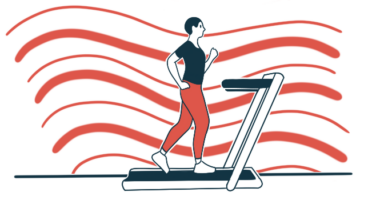Better health literacy tied to healthier exercise habits in survey
Critical health literacy refers to an ability to modify and use information

People with Parkinson’s disease who maintain the recommended level of weekly physical activity tend to be those with critical health literacy, or the ability to understand health information and apply it in decisions regarding their well-being, a survey study reports.
Offering targeted education about exercise and physical activity may help patients in proactively adopting healthier habits for managing their Parkinson’s symptoms and preserving their quality of life.
“Proactive attitudes to critically evaluate and utilize as well as understand health information may positively influence the promotion of [physical activity],” the researchers wrote.
The study, “Association between physical activity and health literacy in patients with Parkinson’s disease: an online web survey,” was published in BMC Neurology.
Weekly exercise is recommended for people with Parkinson’s
Parkinson’s motor symptoms occur as a result of the gradual loss of certain neurons, or nerve cells, in a region of the brain involved in the control of movement and coordination.
A range of disease treatments and approaches are available that can help patient with managing their symptoms. These include engaging in physical activity and exercise, which may not only improve balance and coordination but also ease nonmotor Parkinson’s symptoms.
Health literacy refers to how well people can find, understand, and use information for health-related decisions and actions. It is important for engaging in physical activity and “turning it into a habit,” the researchers, mostly with Fukuoka University’s faculty of medicine in Japan, wrote.
To better understand the link between the healthy exercise and literacy, they asked patients attending their university’s Parkinson’s clinic to fill in a web-based survey.
The survey asked patients about their age, sex, diagnosis, and education level. It also included the short-form International Physical Activity Questionnaire (IPAQ-SF), assessing an individual’s level of physical activity, and the Functional, Communicative, and Critical Health Literacy (FCCHL) scale, which assesses one’s health-related literacy level.
FCCHL has three components — functional, communicative, and critical — and higher scores on a scale of one to four indicate a greater degree of literacy. Functional health literacy involves basic reading and writing skills, while communicative health literacy requires an ability to participate in daily life, and to take information from different sources and understand it.
Critical health literacy, in contrast, involves higher cognitive and literacy skills, those needed to understand information coming from various sources — for example, written or spoken — adopt that information, and modify it so that it can be applied to changing situations.
A total of 114 adults with a Parkinson’s diagnosis, a mean age of 65 and a mean disease duration of 6.4 years, answered the survey. Over half (52.6%) were women, and more than one-third (38.6%) had attended a university or graduate school.
More than one-third (36%) also reported their education level to be junior high school or high school, but the association made between health literacy and activity levels in this study were not “affected by age, gender, duration of illness, or educational history,” the researchers noted.
Answers to the IPAQ-SF revealed an inadequate level of physical activity in 52.6% of these patients, meaning they engaged in less than 2.5 hours of moderate physical activity or less than one hour and 15 minutes of vigorous physical activity each week.
Less than half of patients surveyed held to recommended weekly exercise levels
The remaining 47.4% met the World Health Organization’s recommended level of physical activity with Parkinson’s: a weekly total of at least 2.5 hours of moderate physical activity or at least one hour and 15 minutes of vigorous physical activity. Moderate physical activity was defined as carrying light loads, cycling at a steady pace, or exercising in the yard, while vigorous activity included heavy lifting objects, and intense aerobic, bicycling, or treadmill exercise.
Functional, communicative, and critical health literacy scores were higher among people who were physically active relative to those who were more sedentary.
However, only their critical health literacy scores were significantly higher (3 vs. 2.8 points). While no causal relationship could be inferred, further analysis showed that patients with higher critical health literacy were 2.46 times more likely to be physically active.
People with Parkinson’s “have varying abilities depending on the presence and type of non-motor symptoms in addition to the individual’s motor symptoms,” the researchers wrote. “The fact that critical [health literacy] was associated with lower [physical activity] … suggests that the ability to assess and … [adapt] to the type and amount of PA was a factor in promoting [physical activity].”
More worked is needed and in more diverse patient groups, because limiting this study to people able to be surveyed online may have brought in a bias.
Still, “we believe that the ability to critically examine whether specific information about [physical activity] can be adapted to oneself, in addition to understanding and sharing the benefits of [physical activity], can lead to the formation of exercise habits,” the researchers concluded.







